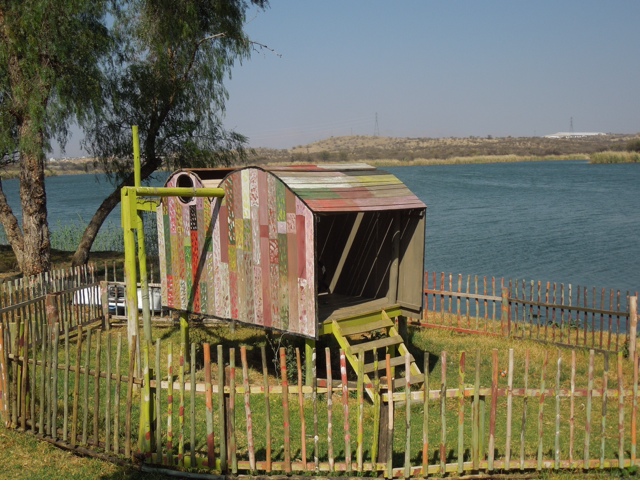Namibia's capital spreads out in a wide valley between bush-coverd hills and appears to be quite small.
As you arrive in the city the pavement cafe and picturesque old German architecture conspire to give an airy,European feel, while street vendors remind you that this is Africa.
At an altitude of about 5200 feet, in the middle of Namibia's central highlands, Windhoek stands at the head of the valley of one of the Swakop River's tributaries. The Nama people named this place Aigams (fire-water) and the Herero called it Otjomuise - place of steam. The Germans say that the name Windhoek - "windy corners".
The Germans arrived in 1890, under Major Curt von Francois. They completed the building of their fort. Gradually German colonists arrived, and the growth of the settlement accelerated with the completion of the railway from Swakopmund in 1902. The beautiful Christus Kirche, constructed in 1907. In the 1970's and '80's racial separation forced the black residents away from the city. The black populaton moved to Katutura.
The 1990's following independence saw the construction of new office buildings in the centre of town.
The Desert Express was introduced in 1998 and travels between Windhoek and Swakopmund. There are 24 air conditioned cabins.
Out beyond Katutura, overlooking the Gorengab Dam, this co-operative employs local woment in a village setting to produce a range of crafts, including textiles and baskets. They also make recycled glass jewellery.
The Himba people adorn their skin and hair with deep-red ochre powder mixed with fat, both for protection against insects and the sun, and for cleanliness; water for washing is a rarity. Their striking appearance is further enhanced by elaborate headdresses and jewellery. Their clothes are a simple goatsin skirt, and for warmth, a rough blanket. As in many traditional societies, the men tend the cattle, so are usually absent during the day, leaving the bulk of the work to the women.
One of Windhoek's best-known landmarks, The Reiterdenkmal (Equestrian Statue)
disappeared under cover of darkness. It was a memorial to the fallen German soldiers in the war of resistance 1903-1907. There was no corresponding statue to honor the Herero and Namo who lost their lives. Now there is a beautiful statue honoring the freedom of the Nambian people from the German oppressors. 
 Representation of what the Germans did to the Namibian people...."Their blood waters our Freedom"
Representation of what the Germans did to the Namibian people...."Their blood waters our Freedom"

 Representation of what the Germans did to the Namibian people...."Their blood waters our Freedom"
Representation of what the Germans did to the Namibian people...."Their blood waters our Freedom"
There are streets in Windhoek named after Mugabe and Fidel Castro....strange friends....
 $60 million independence memorial museum. There is a towerning statue of President Pohamba who was the first President following the independence
$60 million independence memorial museum. There is a towerning statue of President Pohamba who was the first President following the independence

 $60 million independence memorial museum. There is a towerning statue of President Pohamba who was the first President following the independence
$60 million independence memorial museum. There is a towerning statue of President Pohamba who was the first President following the independence




























